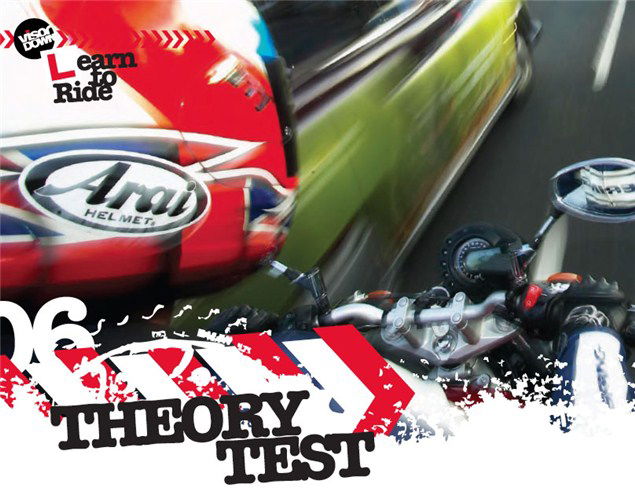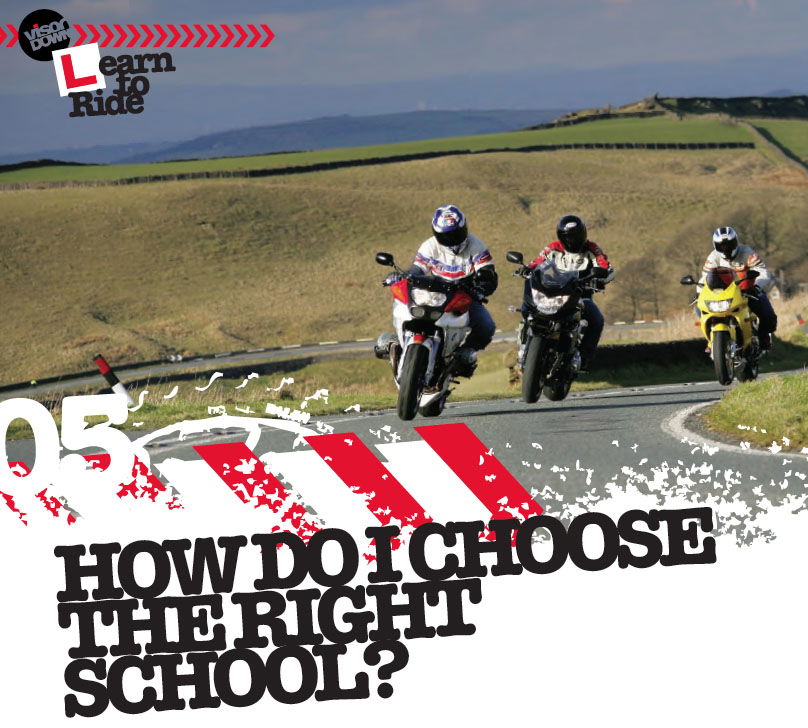Learning to ride a motorcycle: Theory test
Study what you need to know to pass the multiple choice theory and hazard perception tests


THE THEORY test is broken into two parts; multiple choice and hazard perception. Even if you have taken a theory test in order to get your car licence, you will need to take another one to get your motorcycle licence.
Article originally published July 2011, updated July 2013
The first part of the theory test is the Multiple Choice test. This is taken on a computer and you’re given 57 minutes to answer 50 questions. You need to score 43 or more to pass this part of the test.
The second part of the test is the Hazard Perception test which is also taken on a computer. You’re shown 14 different video clips which feature everyday road scenes. As the clip progresses the scene unfolds and you’ll have to point out a developing hazard in each clip. In one of the clips, you’ll have to spot two hazards. In each clip, the maximum you can score is 5 points, with a lower score being awarded for a slower response. The passmark for the Hazard Perception test is 44 out of 75.
After the test, you’ll be directed out of the test room and given your results by the test centre staff. If you fail either part of the theory test, you’ll have to retake the whole test again.
Two Part Test: Multiple Choice and Hazard Perception
Cost: £31
Multiple Choice: 50 Questions, Pass mark: 43, Time: 57 minutes
Hazard Perception: 14 Questions, Pass mark: 44 out of 75
10 sample theory test questions
1) You are about to turn right. What should you do just before you turn?
a) Give the correct signal
b) Take a ‘lifesaver’ glance over your shoulder
c) Select the correct gear
d) Get in position ready for the turn
2) What is the ‘lifesaver’ when riding a motorcycle?
a) A certificate every motorcyclist must have
b) A final, rearward glance before changing direction
c) A part of the motorcycle tool kit
d) A mirror fitted to check blind spots
3) You are riding towards a zebra crossing. Pedestrians are waiting to cross. You should
a) Give way to the elderly and infirm only
b) Slow down and prepare to stop
c) Use your headlight to indicate they can cross
d) Wave at them to cross the road
4) You are riding a motorcycle and following a large vehicle at 40 mph. You should position yourself
a) Close behind to make it easier to overtake the vehicle
b) To the left of the road to make it easier to be seen
c) Close behind the vehicle to keep out of the wind
d) Well back so that you can see past the vehicle
5) You are riding on a country road. Two horses with riders are in the distance. You should
a) Continue at your normal speed
b) Change down the gears quickly
c) Slow down and be ready to stop
d) Flash your headlight to warn them
6) A loose drive chain on a motorcycle could cause
a) The front wheel to wobble
b) The ignition to cut out
c) The brakes to fail
d) The rear wheel to lock
7) When riding and wearing brightly coloured clothing you will
a) Dazzle other motorists on the road
b) Be seen more easily by other motorists
c) Create a hazard by distracting other drivers
d) Be able to ride on unlit roads at night with sidelights
8) You are riding behind a long vehicle. There is a mini-roundabout ahead. The vehicle is signalling left, but positioned to the right. You should
a) Sound your horn
b) Overtake on the left
c) Keep well back
d) Flash your headlights
9) You are riding slowly in a town centre. Before turning left you should glance over your left shoulder to
a) Check for cyclists
b) Help keep your balance
c) Look for traffic signs
d) Check for potholes
10) Your motorcycle has broken down on a motorway. How will you know the direction of the nearest emergency telephone?
a) By walking with the flow of traffic
b) By following an arrow on a marker post
c) By walking against the flow of traffic
d) By remembering where the last phone was
Part 5: Choosing a training school | Part 7: Practical test
Answers:
1) b
2) b
3) b
4) d
5) c
6) d
7) b
8) c
9) a
10) b

